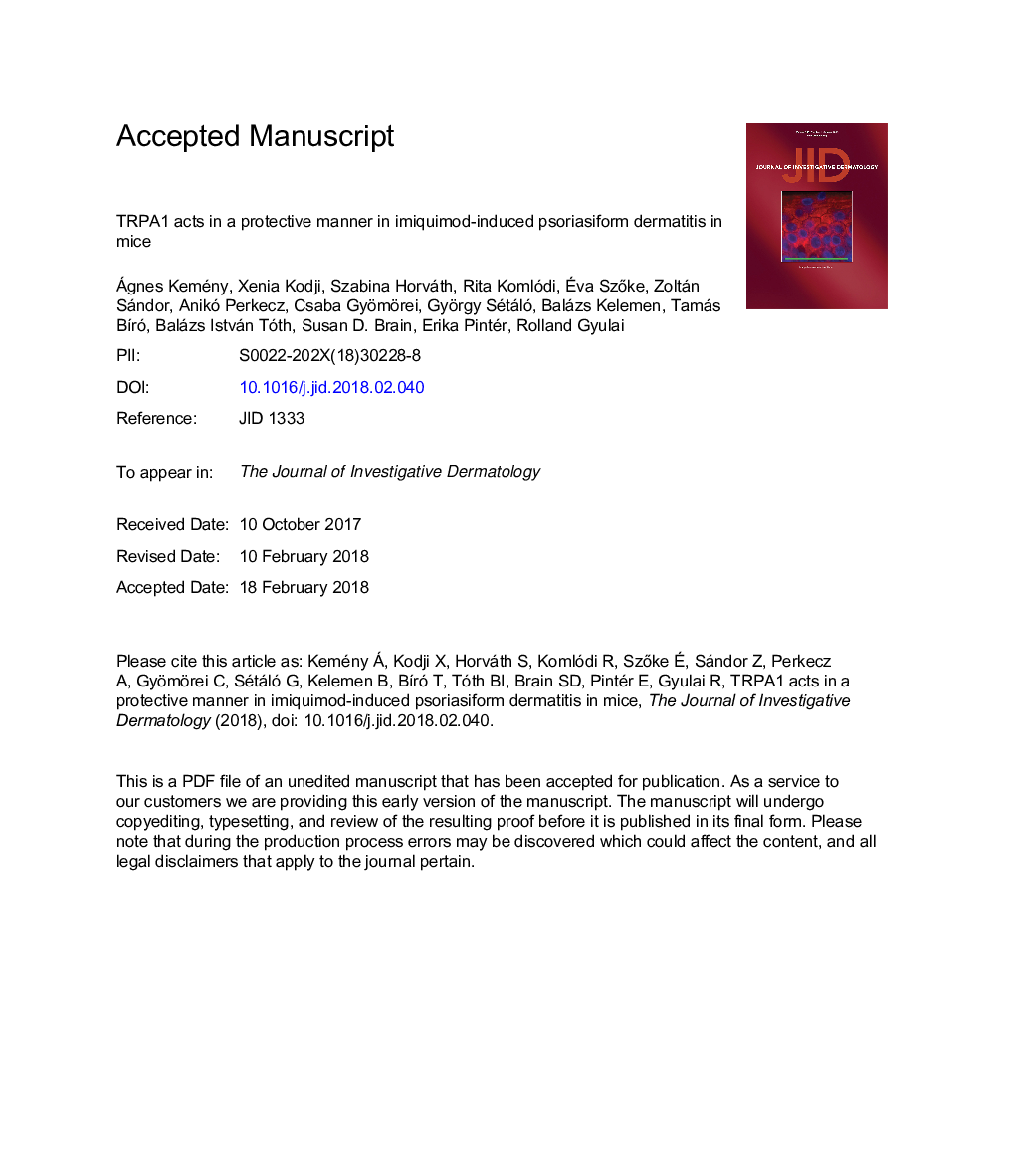| Article ID | Journal | Published Year | Pages | File Type |
|---|---|---|---|---|
| 8715810 | Journal of Investigative Dermatology | 2018 | 32 Pages |
Abstract
This study revealed the modulatory role of transient receptor potential ankyrin 1 (TRPA1) and vanilloid 1 (TRPV1) cation channels in the Aldara-induced (5% imiquimod) murine psoriasis model using selective antagonists and genetically altered animals. We have also developed a refined localized model to enable internal controls and reduce systemic effects. Skin pathology was quantified by measuring skin thickness, scaling, blood flow, and analyzing dermal cellular infiltrate, whereas nocifensive behaviors were also observed. Cytokine gene expression profiles were measured ex vivo. Psoriasiform dermatitis was significantly enhanced in TRPA1 knockout mice and with TRPA1 antagonist (A967079) treatment. By comparison, symptoms were decreased when TRPV1 function was inhibited. Imiquimod induced Ca2+ influx in TRPA1-, but not in TRPV1-expressing cell lines. Immunohistochemical studies revealed that CD4+ T helper cells express TRPA1 but not TRPV1 ion channels in mice skin. Compared with the TRPV1 knockout animals, additional elimination of the TRPA1 channels in the TRPV1/TRPA1 double knockout mice did not modify the outcome of the imiquimod-induced reaction, further supporting the dominant role of TRPV1 in the process. Our results suggest that the protective effects in psoriasiform dermatitis can be mediated by the activation of neuronal and nonneuronal TRPA1 receptors.
Keywords
Related Topics
Health Sciences
Medicine and Dentistry
Dermatology
Authors
Ágnes Kemény, Xenia Kodji, Szabina Horváth, Rita Komlódi, Ãva SzÅke, Zoltán Sándor, Anikó Perkecz, Csaba Gyömörei, György Sétáló, Balázs Kelemen, Tamás BÃró, Balázs István Tóth, Susan D. Brain, Erika Pintér, Rolland Gyulai,
